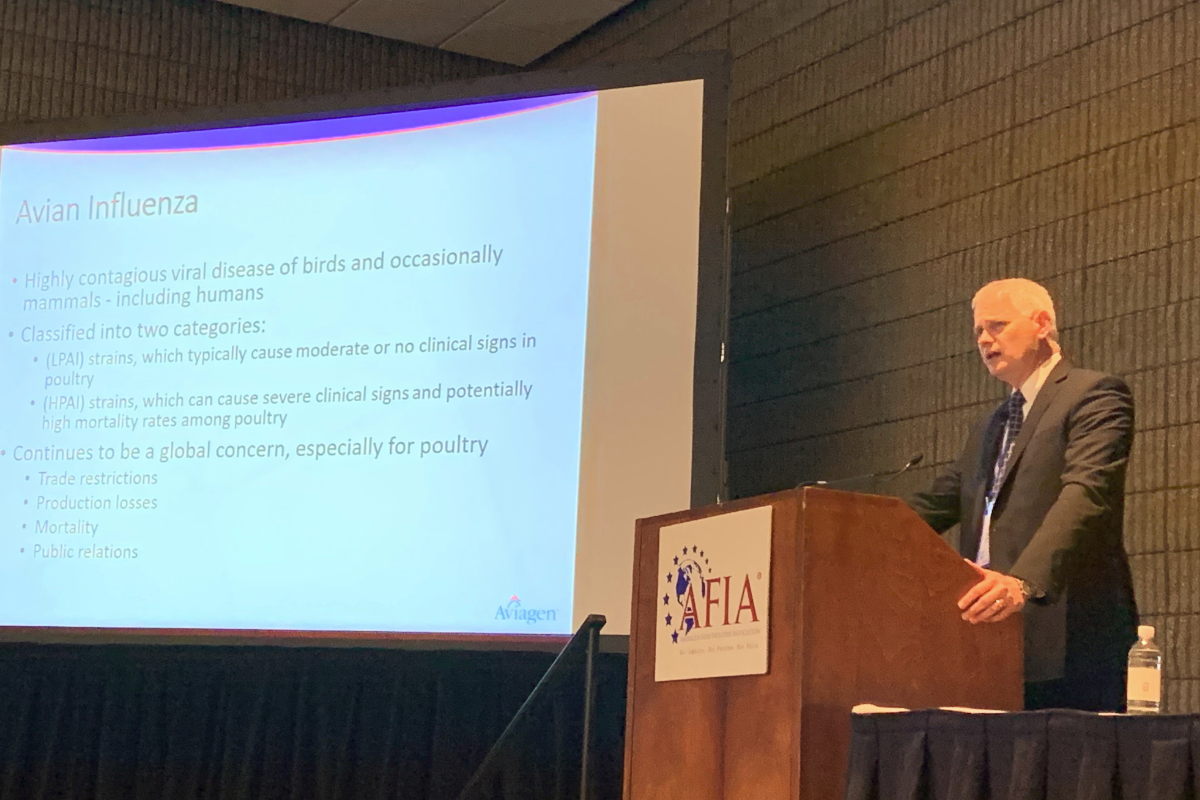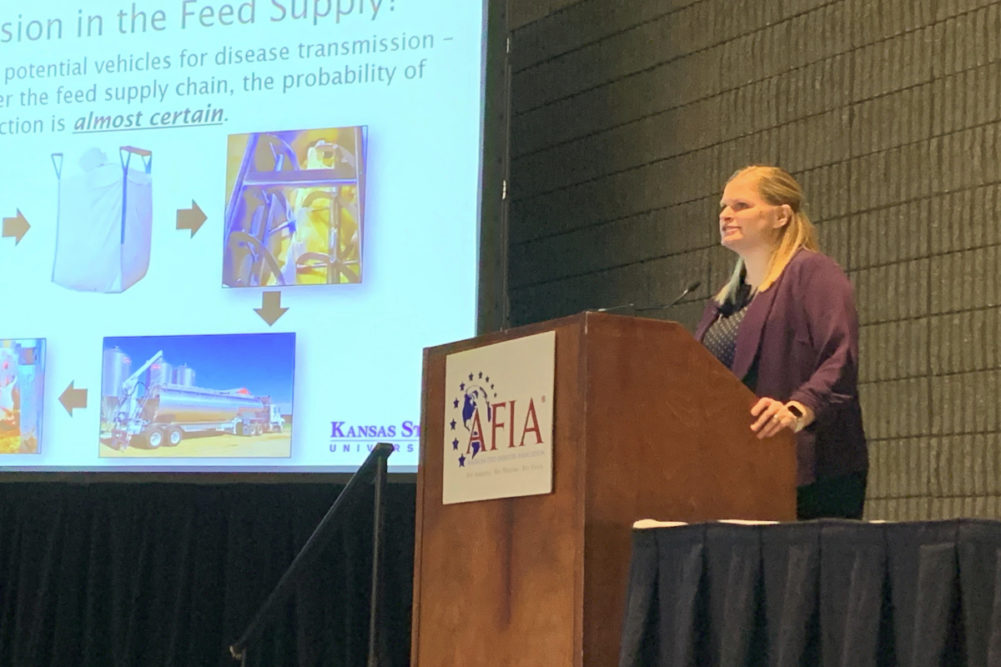ATLANTA, GEORGIA, U.S. — Feed mills should consider implementing biosecurity measures to avoid spreading foreign animal diseases such as African swine fever and avian influenza, said presenters during the International Production & Processing Expo (IPPE).
The Foreign Animal Diseases presentation covered the potential sources of contamination at feed mills and livestock operations, as well as steps to prevent the introduction or spread of disease. IPPE concluded in Atlanta, Georgia, U.S., on Thursday, Jan. 30.
IPPE attracted 32,000 attendees from all over the world and had more than 573,000 square feet of exhibit space and 1,376 exhibitors.
“We are excited about the energy displayed by this year’s attendees and exhibitors,” remarked the three organizations. “The expanded trade show floor, including the new BC-Hall, and attendee and exhibitor numbers continue to complement IPPE’s unparalleled education sessions, invaluable networking opportunities and extensive exhibits showcasing the latest innovative technology, equipment and services for our industries.”
The large trade show floor remains the central attraction, with exhibitors displaying the most current technology in equipment, supplies and services. In addition, the show included a comprehensive education program with more than 200 hours of sessions, including the one on Foreign Animal Disease.
Foreign animal diseases such as African swine fever and avian influenza are costly in loss of animals, trade disruptions, product quality and public relations challenges, said Bill Stanley with Aviagen, during the Foreign Animal Disease discussion.
“Biosecurity is something we all need to be thinking about,” he said. “We don’t need to wait until the disease is close at hand. What are the potential sources for the diseases my biosecurity system must prevent? You have to ask yourself these type of questions so you can go after these potential risks.”
Those risks include people, wild animals, feed, insects, rodents and equipment. While feed is not the most likely vehicle for disease transmission, because of the way it is manufactured and the way it is delivered, if a pathogen enters the feed supply chain, the probability of infection is almost certain, said Cassie Jones, associate professor at Kansas State University.

“Once a virus enters a feed mill, it’s nearly impossible to eliminate,” she said.
KSU researchers learned this first hand after purposely infecting a batch of feed at its Feed Safety Research Center with PEDV. Even after running four clean batches of feed through the mill, there was significant contamination on the equipment. Additionally, there was contamination on equipment within one meter of manufacturing and on surfaces more than three meters away.
“As soon as you introduce a virus into your feed mill, regardless of the method of introduction, you have the potential for that virus to not just effect the next batch of feed, but as you have people walking in and out, there becomes a risk for cross contamination as well,” Jones said.
Equipment had to be broken down, power washed, sanitized and eventually the mill was heated to 140 degrees for 48 hours.
“We can’t do that in normal production feed mills, so why do we need feed biosecurity? So that we don’t have to go through something like this,” she said.
Jones outlined some practices that can reduce risk, but stressed there isn’t one magic bullet for protection. Rather, she described it as a series of hurdles.
“We know we have risks,” Jones said. “Our goal is to create enough hurdles that hopefully one of them will trip up that pathogen and keep it from getting into the mouth of an animal.”
She suggested excluding high risk ingredients, including grains and oilseeds from regions with foreign animal disease.
“We are fortunate enough in the U.S. that we have enough grain and oilseeds available that we don’t need for economic reasons to be taking that risk,” Jones said.
If a feed mill is using other ingredients from regions with animal diseases, make sure that it’s delivered in a new tote or if it’s coming by truck, know what was in the loads immediately prior to the mill’s product. Jones also recommended inspecting and sanitizing the outside of the bags before they come into the mill.
She also said to use porcine-based ingredients with caution. While the manufacturing process should destroy viruses, there isn’t prevention of post-processing cross contamination.
Feed mills should develop a biosecurity plan and an audit for it. This could include sanitizing floors regularly with a 10% bleach solution and avoiding dust as an ingredient in feed.
“Every time we test dust it has a very high pathogen load,” Jones said. “I understand that shrink is a very real thing, but I also want you to understand that it is a high-risk activity. It’s time for us to have a conversation about the cost benefit of continuing to use that dust, particularly in highly sensitive species like a pig.”
The plan could also include cleaning and disinfecting delivery trucks and receiving mats or funnels to limit pathogen entry through the receiving pit. Creating a clean and dirty line in a mill can limit contamination from people.
Workers would enter one direction to the “dirty” side with their street clothes and shoes, remove their shoes, and move to the clean side where they would put on clean shoes and then enter the mill.
“When we implement this we can see very quickly how we can reduce that pathogen load within mills,” Jones said.






